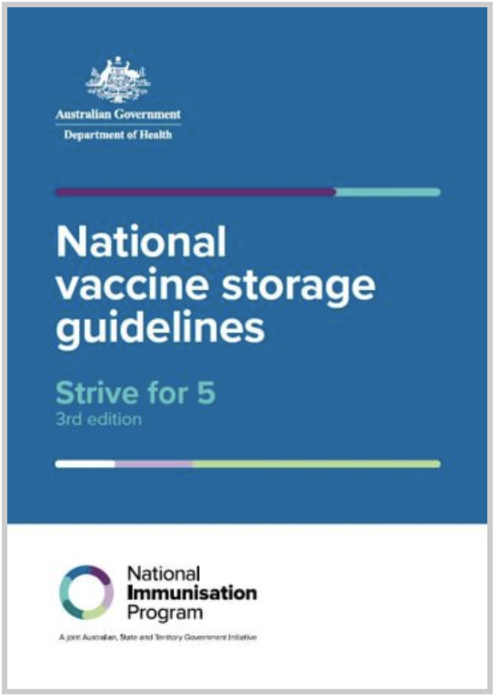Cold Chain Management
Vaccines are delicate biological products that can lose their effectiveness if not stored and handled correctly. Maintaining the correct storage conditions is essential to ensure every vaccine administered is safe and effective.
Why Cold Chain matters
Vaccines can be damaged by:
Freezing temperatures
Heat exposure (above 8°C)
Direct sunlight or UV/fluorescent light
Once a vaccine’s potency is compromised, the damage is cumulative and irreversible—it cannot be restored.
What is the Cold Chain?
The cold chain refers to the system used to transport and store vaccines within the safe temperature range of +2°C to +8°C. This applies from the time the vaccine leaves the manufacturer until it is administered to a patient.
The cold chain is essential to:
Preserve vaccine quality
Protect public health
Maintain confidence in immunisation programs
To learn more about the principles of safe vaccine storage, refer to the National Vaccine Storage Guidelines: Strive for 5 (Section 2).
Safe vaccine storage practices
Use a purpose-built vaccine refrigerator with a temperature data logger.
Monitor and record temperatures at least twice daily.
Avoid overloading refrigerators and ensure adequate air circulation.
Protect vaccines from light exposure during storage and transport.
Train all staff in cold chain management procedures.
Cold Chain breaches
If vaccines are exposed to temperatures outside the recommended range—for example, due to a power outage or refrigerator malfunction—do not use the vaccines until advised.
Instead:
Keep the affected vaccines isolated and clearly labelled “Do Not Use”.
Record temperature data and the duration of the breach.
Immediately contact your local Public Health Unit on 1300 066 055 for guidance.
For more information on handling breaches, refer to Section 8.1: Managing a Cold Chain Breach in Strive for 5.
Maintaining the cold chain is a shared responsibility. With proper training, equipment, and vigilance, we can ensure every vaccine given is safe, potent, and ready to protect.




